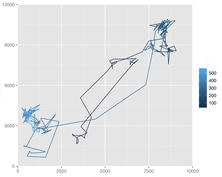Publication trimestrielle du Laboratoire
d'analyse et d'architecture des systèmes du CNRS
There is a growing research interest in Autonomous Underwater Vehicles (AUV), due to the need for increasing our knowledge about the deep sea and understanding the effects the human way of life has on it. This need has pushed the development of new technologies to design more efficient and more autonomous underwater vehicles. Autonomy refers, in the context of this thesis, to the "decisional autonomy", i.e. the capability of taking decisions, in uncertain, varying and unknown environments.A more recent concern in AUV area is to consider a fleet of vehicles (AUV, ASV, etc). Indeed, multiple vehicles with heterogeneous capabilities have several advantages over a single vehicle system, and in particular the potential to accomplish tasks faster and better than a single vehicle.Underwater target localization using several AUVs (Autonomous Underwater Vehicles) is a challenging issue. A systematic and exhaustive coverage strategy is not efficient in term of exploration time: it can be improved by making the AUVs share their information and cooperate to optimize their motions. The contribution of this thesis is the definition of an architecture that integrates such a strategy that adapts each vehicle motions according to its and others' sensory information. Communication points are required to make underwater vehicles exchange information: for that purpose the system involves one ASV (Autonomous Surface Vehicle), that helps the AUVs re-localize and exchange data, and two AUVs that adapt their strategy according to gathered information, while satisfying the associated communication constraints. Each AUV is endowed with a sensor that estimates its distance with respect to targets, and cooperates with others to explore an area with the help of an ASV. To provide the required autonomy to these vehicles, we build upon an existing system (T-REX) with additional components, which provides an embedded planning and execution control framework. Simulation results are carried out to evaluate the proposed architecture and adaptive exploration strategy.





